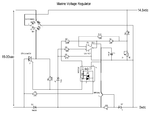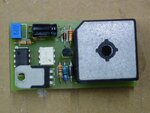bulletbolt
Newbie level 4

Hi all,
Here I have a project for voltage regulator. This is designed to use in small boats where you would need 12v dc power supply for ancillaries.
It's not a perfect design and sometimes I get various faults, some of them are mystique. If someone, who has more experience with voltage control, could have a look and tell their opinion would be highly appreciated. This is not something I do o n daily basis so need experts advice
Here's the schematics:

The questions I have raised is:
What's the limiting AC input
What's the maximum DC load
All this PCB being fitted into small rectangular alu tube and fully potted.
Ideas and thoughts please
Here I have a project for voltage regulator. This is designed to use in small boats where you would need 12v dc power supply for ancillaries.
It's not a perfect design and sometimes I get various faults, some of them are mystique. If someone, who has more experience with voltage control, could have a look and tell their opinion would be highly appreciated. This is not something I do o n daily basis so need experts advice
Here's the schematics:

The questions I have raised is:
What's the limiting AC input
What's the maximum DC load
All this PCB being fitted into small rectangular alu tube and fully potted.
Ideas and thoughts please

